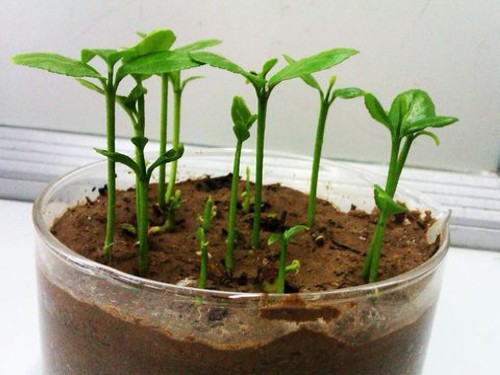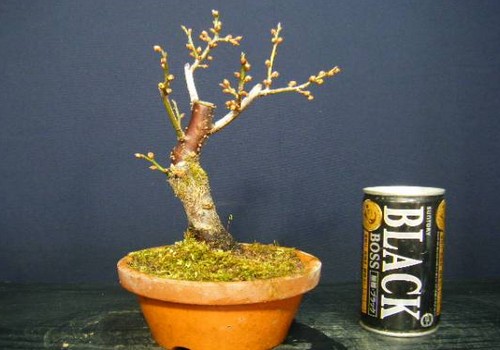How to manage landscape flower seeds after sowing
The reproduction of flowers is divided into sexual reproduction and asexual reproduction. Sexual reproduction is the reproduction of offspring by sowing seeds. Asexual reproduction, also known as vegetative reproduction, uses part of the plant's vegetative organs to grow into new plants. there are cutting, ramet, grafting and striping methods. Among them, the method of sowing and propagation is the most commonly used in landscape flowers. The sowing time is roughly in spring and autumn, usually from February to April and from August to October in autumn. Sowing and reproduction are suitable for most flowers, generally sowing in the open air and sowing in pots.

Open-air sowing should choose places where the terrain is high and dry, flat, leeward to the sun, loose soil and good drainage. The bed should be made on sunny days and when the soil is dry. The land should be deeply ploughed and refined, and soil disinfection and application of base fertilizer should be carried out.
Family cultivation is limited by geographical conditions, there is no large seedbed, all use pot sowing, if there is a downstairs courtyard, you can also use open field sowing, strip sowing. The most economical way is to plant in pots and transplant after emergence. Before sowing, wash the basin clean, fill the basin hole with tiles, cover the basin with coarse sand or other coarse medium as drainage layer, and then fill in the sifted fine sand loam, compact and scrape the basin soil, and then sow seeds.
1. Temperature
Given the appropriate temperature according to the requirements of specific varieties, the germination temperature of most seeds is between 20 and 25 ℃. Too high and too low temperature will directly affect the germination rate of seeds.
2. Humidity
The management of moisture after sowing is very important. In winter, when the soil temperature is low at night, there is little water loss, so there is no need to replenish water or less water at the seedling stage; if the soil temperature is high, spray water should be sprayed according to the actual needs at the seedling stage. When raising seedlings in summer, water evaporates very quickly, and water must be replenished at any time according to the actual situation. If the seed is very fine, in order to avoid the erosion of water, the method of soaking basin can be used to replenish water.
3. Lighting
Except for some varieties such as cyclamen that need darkness during germination, most seeds are conducive to germination under light conditions. Seeds must be exposed to light after germination, otherwise the seedlings will grow too much.
4. Remove the cover
After the seeds germinate, the mulch should be uncovered in time. 60% of 70% of the seeds should remove the membrane after the cotyledons are unfolded to prevent the seedlings from overgrowing. At the same time, the humidity of the substrate should be maintained so that the cotyledons of some ungerminated seeds protrude successfully from the seed shell.
5. Transplant
When the seedlings grow to be suitable for transplanting, they should be planted or planted in time, otherwise it is easy to cause excessive growth of seedlings and production delay. The time of transplanting all kinds of seedlings is different, which should be decided according to the actual situation.
In post-management, the following work needs to be done:
1. Water replenishment
① seeds begin to be watered immediately after sowing. In principle, during the early stage of germination and seedling growth, water is sprayed 1-2 times a day to keep the soil layer about 10 cm moist, and the water supply must not be stopped halfway.
With the growth of seedlings, ② gradually decreased the amount of water. However, during the seedling growth period of one month, an adequate supply of water should be ensured.
2. Weed control
According to the growth of seedlings, ① generally begins to pull out weeds and seedlings after 1 month. During this period, we must pay attention to distinguish between weeds and flowers and seedlings, and if we can't distinguish them well, we'd rather not rush to remove impurities.
During the growth period of ②, weeding once a month is an important condition to ensure that landscape flowers bloom as scheduled and make the overall performance good.
3. Pruning and finishing
After the end of the whole flowering period, before winter, water the last time, cut off the withered ground, properly cover the soil or non-woven cloth, plastic sheeting and other mulch according to individual needs, and re-germinate into the next growth period in the next spring.
4. Make-up broadcast
① reseeding is an effective way to continue the wildflower combination and maintain the landscape effect, and it has become an important part of routine management.
The supplementary broadcast quantity of ② is recommended to be 5g / kg.
The method of opening shallow trenches on the soil surface during ③ reseeding can ensure good contact between soil and seeds.
Time: 2019-06-10 Click:
- Prev

Steps to sow seeds for flowers
The seeds of different flowers are different, because of their different light-loving nature. Some small seeds do not need to be covered with soil, while some larger seeds need to be covered with soil. Generally speaking, small seeds are generally light-loving, do not cover the soil, large seeds hate light, seeds should be covered with soil, cover the seeds
- Next

Modeling method of five-color plum bonsai
The five-color plum used to make bonsai can be propagated by cutting, which is usually carried out in the growing season. The sturdy annual branches are cut, cut every two segments, inserted in sand or vermiculite, maintained under the shade shed, keep the soil and air moist, and take root for about 40 to 50 days. The seedlings can be divided into pots.
Related
- Fuxing push coffee new agricultural production and marketing class: lack of small-scale processing plants
- Jujube rice field leisure farm deep ploughing Yilan for five years to create a space for organic food and play
- Nongyu Farm-A trial of organic papaya for brave women with advanced technology
- Four points for attention in the prevention and control of diseases and insect pests of edible fungi
- How to add nutrient solution to Edible Fungi
- Is there any good way to control edible fungus mites?
- Open Inoculation Technology of Edible Fungi
- Is there any clever way to use fertilizer for edible fungus in winter?
- What agents are used to kill the pathogens of edible fungi in the mushroom shed?
- Rapid drying of Edible Fungi

